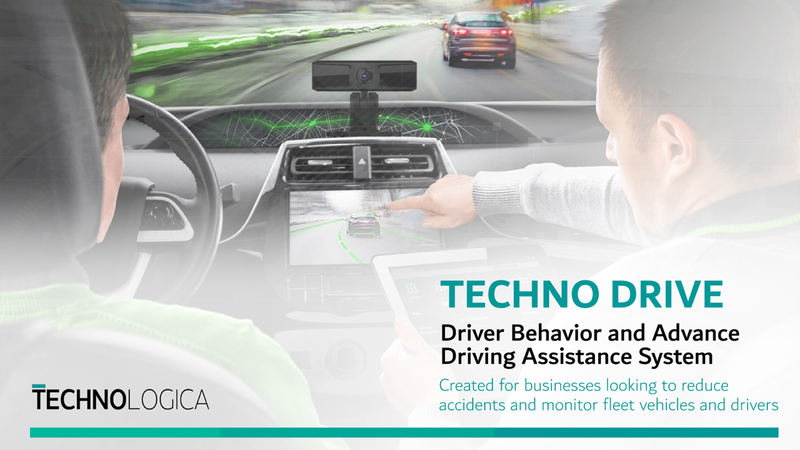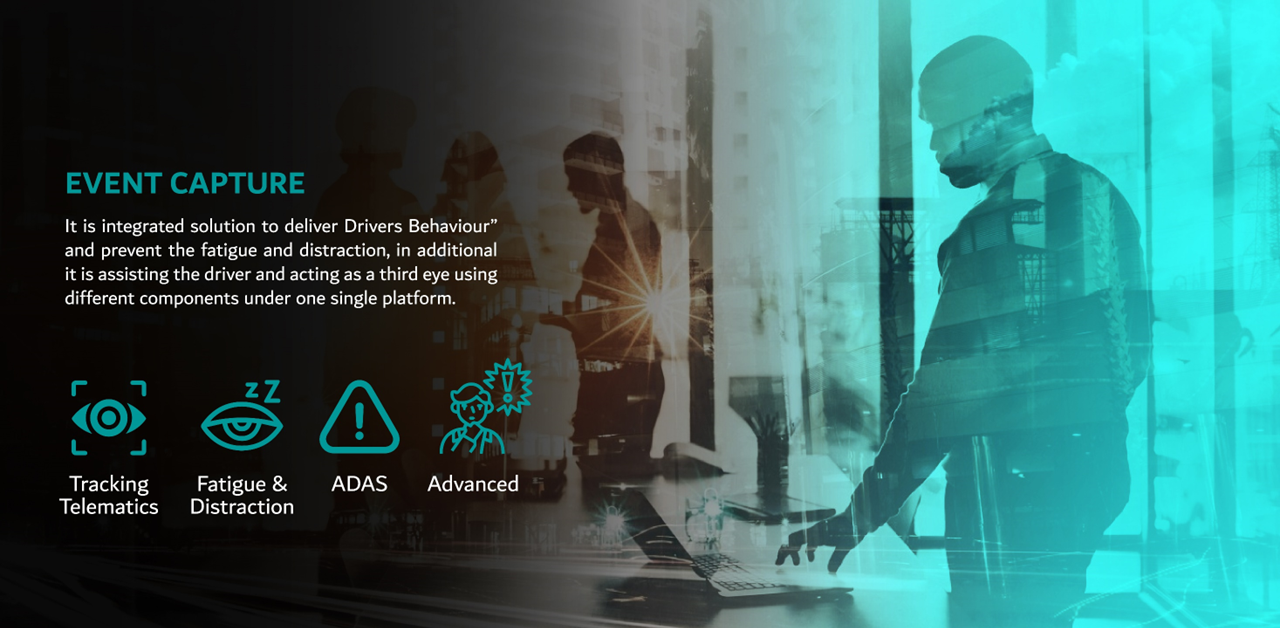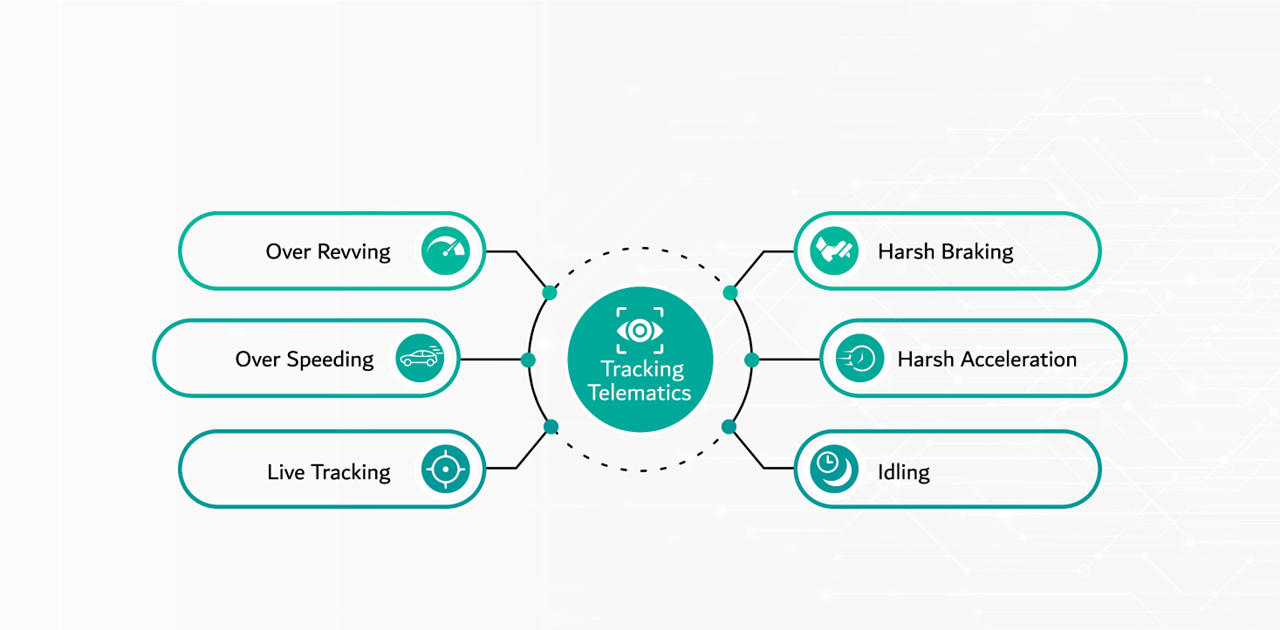TechnoDrive

TechoTrack
(Telematics)
Telematics system includes a vehicle tracking device installed in a vehicle that allows the sending, receiving and storing of telemetry data. It connects via the vehicle’s own onboard diagnostics or CAN-BUS port with a SIM card, and an onboard modem enables communication through a wireless network.
The device collects GPS data as well as an array of other vehicle-specific data and transmits it via GPRS (General Packet Radio Service), 4G mobile data and cellular network or satellite communication to a centralized server. The server interprets the data and enables it to be displayed for end users via secure websites and apps optimized for smartphones and tablets.
The telematics data captured can include location, speed, idling time, harsh acceleration or braking, fuel consumption, vehicle faults, driving and driver behavior, and more. When analyzed for particular events and patterns, this information can provide in-depth insights across an entire fleet.

TechnoMatics
(Telematics and ADAS)
Almost all vehicle accidents are caused by human error, which can be avoided with Advanced Driver Assistance Systems (ADAS). The role of ADAS is to prevent deaths and injuries by reducing the number of car accidents and the serious impact of those that cannot be avoided.
• Essential safety-critical ADAS applications include:
• Pedestrian detection/avoidance
• Lane departure warning/correction
• Traffic sign recognition
• Automatic emergency braking
• Blind spot detection
These lifesaving systems are key to ensuring the success of ADAS applications, incorporating the latest interface standards and running multiple vision-based algorithms to support real-time multimedia, vision co-processing, and sensor fusion subsystems.
An Advanced system has been proven to reduce incidents resulting from fatigue and distraction; advance Technodrive continuously measures drivers eye and eyelid behavior to determine the onset of fatigue and micro sleeps and delivers real-time detection and alerts.

TechoPro
(Fatigue, Distraction, and ADAS)
TechnoPro are intelligent systems that reside inside the vehicle and assist the main driver in a variety of ways. These systems may be used to provide vital information about traffic, closure and blockage of roads ahead, congestion levels, suggested routes to avoid congestion etc. These systems may also be used to judge the fatigue and distraction of the human driver and thus make precautionary alerts or to assess the driving performance and make suggestions regarding the same. These systems can take over the control from the human on assessing any threat, perform easy tasks (like cruise control) or difficult maneuvers (like overtaking and parking). The greatest advantage of using the assistance systems is that they enable communication between different vehicles, vehicle infrastructure systems and transportation management centers. This enables exchange of information for better vision, localization, planning and decision making of the vehicles.
• ADAS systems include long- and medium-range radar and vision systems. Developing an ADAS system requires state-of-the-art yet cost-effective RF technology that can be embedded in the vehicle for exterior object detection and classification. A state-of-the-art radar system can tell a vehicle from a pedestrian, from a wall, and know the location and potential corrective path. Extraordinary computation power is needed to make the system efficient, but to become more prevalent in the marketplace the cost must be very low.
• Active safety systems include adaptive cruise control (ACC) and collision-warning systems with automatic steering and braking intervention. In a collision-warning system, a microcontroller-controlled 77 GHz transmitter emits signals reflected from objects ahead, to the side and to the rear of the vehicle, which are captured by multiple receivers integrated throughout the vehicle. Using a high-performance 32-bit single- or dual-core microcontroller with embedded flash and RAM, the radar system can detect and track objects in the frequency domain, triggering a driver warning of an imminent collision and initiating ESC emergency intervention.
• Camera systems in ADAS can display what is behind or beside the vehicle, even at night on screen. They can also analyze the video content for automatic lane-departure warning systems and high/low-beam headlight control. An image sensor interface provides incoming video frames to a single- or dual-core architecture optimized with DSP extensions for image improvement filtering and edge or spot detection. Additional system requirements include an appropriate communication interface, an integrated DRAM interface for fast access to external memory and embedded flash for low system cost.
• Driver behaviors
Normally, driver eye movement can be classified as intention guided and nonintention guided. Intention-guided eye movement means the eye fixation or saccades were done on purpose, whereas the nonintention-based movement may be due to distractions. Driver visual fixation will no longer follow the driver's attention when the driver is distracted. At this moment, eye movement cannot reflect the driver's mental purpose and the intention prediction result cannot be trusted. In terms of intention-oriented eye tracking, it can be viewed as a cognitive progress of information gathering, which can reflect the driver's mental state earlier than the vehicle parameters.